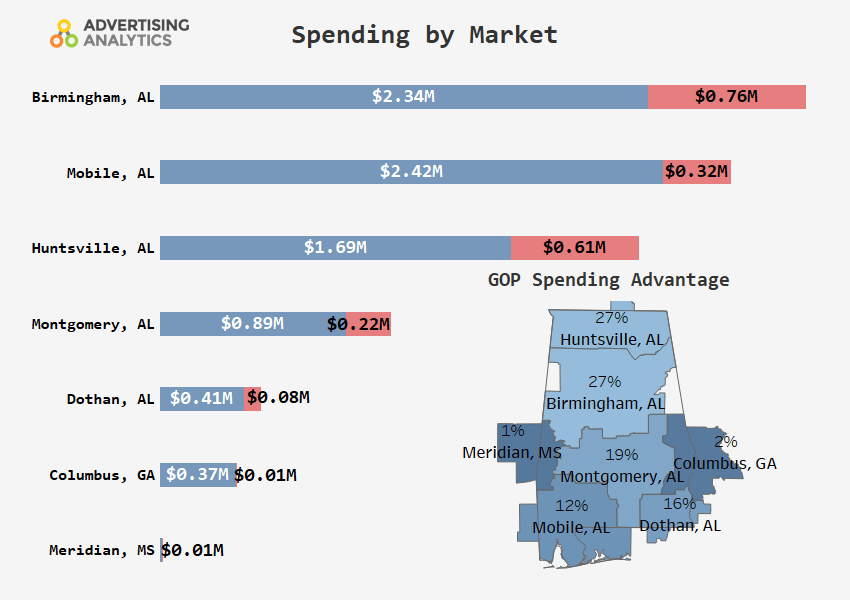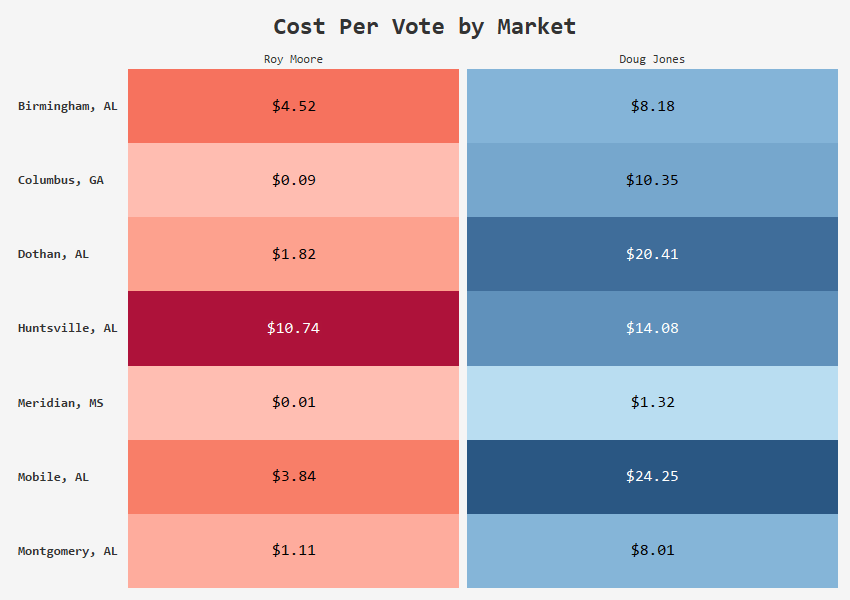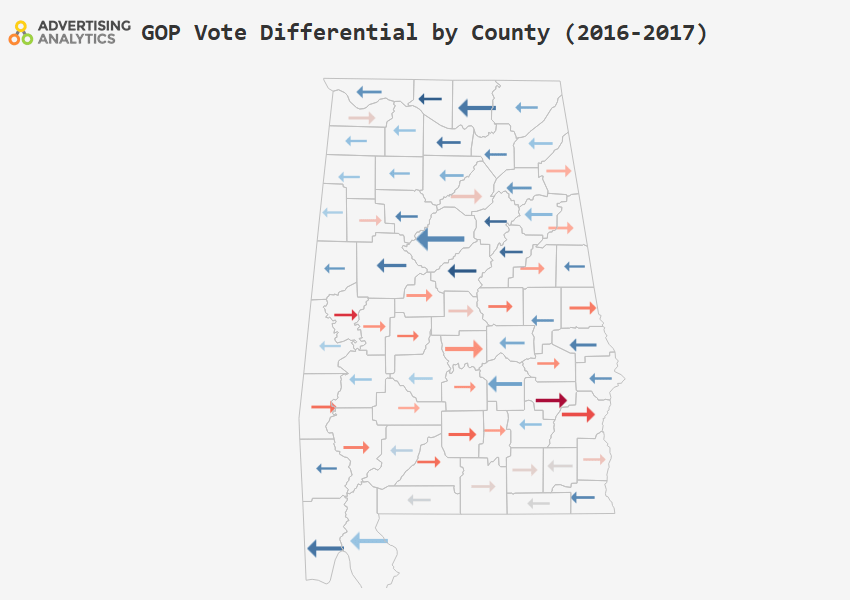December 13, 2017
On December 12th the people of Alabama elected Democrat Doug Jones to the Senate seat left vacant following Jeff Session’s appointment as Attorney General. Jones defeated Roy Moore by 1.5%, 671,151 votes to 650,436, marking a surprising end to a turbulent election. Roy Moore won a contentious primary and appeared to be cruising to victory before his campaign was rocked with scandal. This opportunity galvanized Democratic donors, allowing Doug Jones to jump in and saturate the airwaves with campaign advertising in the weeks before the election.
Alabama Senate Election Analysis

Spending
Jones’ surprise victory was driven in part by his dominance in fundraising and spending. He outspent the Moore campaign 5 to 1 over the course of the campaign: $10.0M to $2.1M. Jones received relatively little outside help, with only 25% of Democratic spending coming from issue groups, while Moore was helped greatly by America First Action ($500k) and Proven Conservative PAC ($200k) over the last three weeks of the campaign. Outside groups such as these made up 41% of GOP spending. Jones consistently dominated spending across all media markets, where he focused his messaging on bipartisanship, character, and what he called his “kitchen table” issues, such as education. This contrasted with Moore’s messaging, much of which was dedicated to defending himself from the allegations.

Jones’ Cost per Vote (CPV) was considerably higher than Moore’s, as one would expect from a campaign that outspent the opposition 5 to 1. However, it is noteworthy that Jones’ CPV in Huntsville and Birmingham, two of the key markets in the state, was only a few dollars higher than Moore’s. These counties were home to much of Jones’ base, and his expensive get out the vote campaign paid off with huge margins of victory in these areas, allowing him to survive heavy deficits in more rural areas.

Tracking the margin of victory by county paints an intriguing story, but does not tell the whole story of how Jones was able to become the first Democrat to win a Senate seat in Alabama in a quarter century. While Jones outperformed Hillary Clinton in the major metro areas of Birmingham, Huntsville, and Mobile, he actually underperformed her margin in much of the “Black Belt” of Alabama. However, voters in these areas turned out at historically high rates, and while Moore’s base voted for him at about the expected margin, they turned out at insufficient rates to outweigh the advantages Jones had in educated, wealthier suburbs and in urban areas. In fact, Jones was so successful at turning out his supporters that he received 93% of the votes that Clinton received in 2016, while Moore received only 50% of the votes received by President Trump.
Conclusion
Jones was able to capitalize on Roy Moore’s scandal-filled campaign to become the first Democratic Senator from Alabama since current Republican Senator Richard Shelby as elected as a Democrat in 1986 before switching parties in 1994. It seems unlikely that Jones would have won under normal circumstances, but he capitalized on the hand he was dealt. He utilized his major advantage in paid media to spread his message of bipartisanship and compromise, while encouraging voters that it was okay to cross the aisle. While undoubtedly a major victory for the Democratic Party in one of the reddest states in the country, the unique circumstances of the election make it difficult to draw broader conclusions about the national environment. However, it is important to note that Jones was not handed the victory. His strong media strategy allowed to him to get his message to the right voters at the right time, boosting his turnout amongst key demographics.






